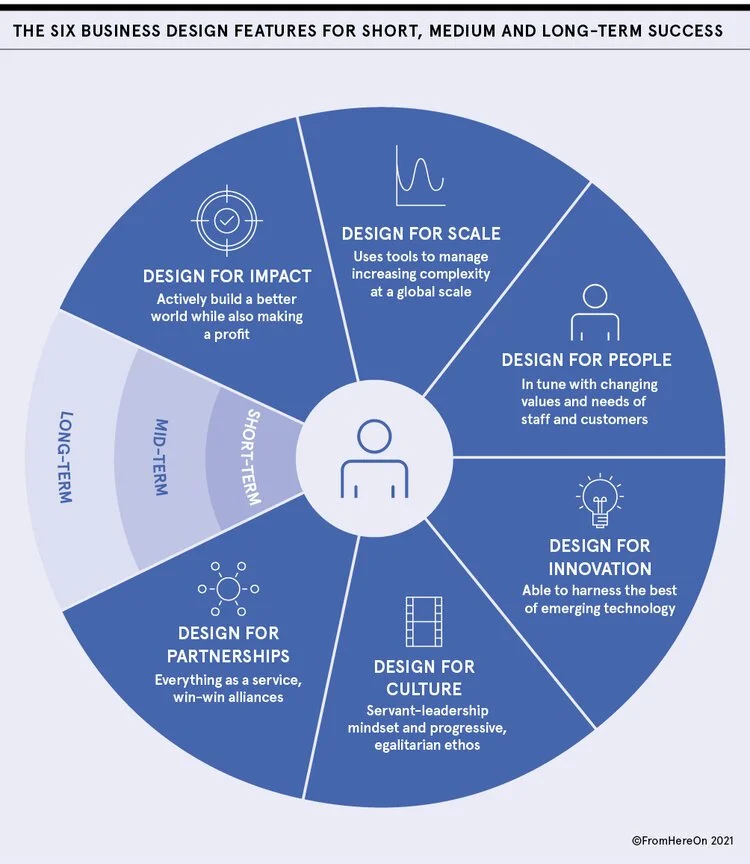Meet the ‘Conscious CEO’, a new breed of leader
First published 26th March, 2021 in The Future CEO Report.
THE ECONOMIC AND SOCIAL TURBULENCE WROUGHT BY THE COVID-19 PANDEMIC HAS PRESENTED A FRESH, COMPLEX SET OF CHALLENGES FOR BUSINESSES AND A BRAVE NEW WORLD THAT CALLS FOR A NEW CLASS OF LEADER: ENTER THE ‘CONSCIOUS CEO’
The pandemic served as a dramatic inflection point for businesses worldwide, resulting in irreversible economic and societal shifts. From restrictions on movement and the decrease in consumer spending that followed, to an almost overnight shift towards remote working and a massive spike in online shopping.
Amid the uncertainty of the past 12 months, it is chief executives (CEOs) who have been at the receiving end, steering businesses through uncertainty. Agility has been the order of the day for business leaders across the board, the onus being on making quick decisions in the face of changing situations and using data to forge deeper connections with customers.
Indeed, recent data from IBM’s Institute for Business Value shows dexterity is a top priority, with 56 per cent of CEOs emphasising the need to “aggressively pursue” operational agility and flexibility over the next two to three years. CEOs also cite emerging technology as the factor that will most significantly impact their business in the next few years. Outperforming firms are, unsurprisingly, most focused on these technologies and the risks and opportunities they bring.
Highly creative and adaptive CEOs have embraced this as a time of new possibilities and fertile prospects, says FromHereOn’s CEO, Hugh Evans, working with global clients such as BT, ING Bank, Belron, Vodafone and Toyota.
“Markets have been flooded with stimulus that, combined with the turbulence of the pandemic, has been overwhelming. However, many creative business leaders have embraced this period as a huge opportunity,” says Evans.
Yet, amid the turmoil caused by COVID, he observes that some CEOs have made a “massive lurch” towards short-term business planning. Leaders are aware of the aftershocks to come — only 27 per cent of Fortune 500 bosses expect their employees to return to the office full-time and most understand it will be 2022 before economic activity returns to pre-pandemic levels — but they’re more concerned with the here and now.
This attitude extends to internal and external relationships, asserts Evans. Many bosses are underprepared for just how much the values of their staff and customers will change in the coming years. Such short-sightedness will leave leaders unable to see the bigger picture and create long-term value from the data at their fingertips.
The ‘new normal’ we now operate under calls for a new type of leader: the ‘conscious CEO’. This person is a systems thinker, but they don’t see the world in black and white. The conscious CEO has an overview of how wider changes occurring in society, technology and the economy will impact their business.
With the world increasingly moving towards an everything-as-a-service (XaaS) business model, this new breed of leader sees the world as a set of technicolour, interconnected networks and surrounds themselves with the right people, partners and suppliers to unlock new opportunities for their own business.
WHAT DOES A CONSCIOUS CEO LOOK LIKE?
The word ‘conscious’ has been co-opted by brands in recent years, earning a reputation as a loaded term typically tied to corporate social responsibility (CSR) initiatives. However, it’s time for CEOs to reclaim it. The conscious CEO is not driven by social impact, but is instead a figure that embodies social impact.
“Historically, CEOs had to have travelled a long path and been battle-scarred and hardened to be effective in their roles. Yet, this old guard came from an environment that was a lot more predictable than today’s,” says Evans. “They’re not distracted by technology, instead, they understand its significance and how it will change over time.”
By contrast, the modern CEO is egalitarian and meritocratic by nature. “Their focus is servant leadership so that they can realise the creative capability of their individual employees and, by extension, their organisation,” he adds.
The conscious CEO will set in-train a new way to operate; one that delivers change, service by service, throughout the organisation, and orchestrates customer, business and technology services as a live, holistic system that is always on and always relevant.
REACHING A STATE OF AWARENESS
So, how can CEOs unlock their awareness to improve business outcomes? For Evans, the key to reaching conscious-CEO status is rooted in six key design concerns: impact, scale, people, innovation, culture and partnerships.
As a starting point, this new class of leader calls for a mindset that hopes for their business to have a positive impact. For the conscious CEO, though, impact is not relegated to a mission statement.
Evans elaborates, “CEOs need to be able to understand the consequences of the decisions they make. This means having a clear social agenda, but also comes down to being able to have mature discussions with staff around issues like diversity and being aware of the issues staff or consumers might face.”
This is key for the conscious CEO. This leader is one who not only understands the changing nature of their current and emerging workforce, but also has a solid grip on the individual and collective needs of their customer. On top of this, they’re well-versed in the future of work in an increasingly remote, asynchronous world.
Evans points to a banking client that FromHereOn is currently helping to transform from a financial institution into “a human-centred, service-driven organisation”. A large part of this project has included examining the business’ internal culture. Another telecom client has just undergone a similar remodelling with FromHereOn.
“Both of these were, at their core, cultural transformations. We observed a shift in these clients from authoritative control to a networked approach that seeks to meet all stakeholder needs,” he says.
Another consideration for agile, aware CEOs should be technological innovation. The conscious CEO appreciates the acceleration of digital and the doors it can open for their market and their workforce. There is a need to understand how different types of technology, including AI, underpin the value they bring to the table.
In our increasingly digital world where companies are managing transformation across countries and continents, they need to be able to “design for complexity and scale too”, says Evans. “This requires a very particular type of toolkit and a human-centred approach.”
UNLOCKING CONSCIOUSNESS THROUGH CONNECTED PARTNERSHIPS
For businesses to thrive, CEOs must also show that outperforming companies are reporting a heightened emphasis on partnerships. Some 63% of top performers identify collaborations as having increased in importance over the past year, compared with just 31% of underperformers.
Driving this shift has been the increased adoption of cloud computing services, which has given rise to the XaaS business model. It is a sea-change that calls for CEOs to lean on frictionless partners that can plug and play instantaneously, as a seamless extension of their enterprise.
But these partnerships only work if they’re built on a mindset of alliance. “CEOs should work with suppliers, partners and consultants that embed themselves into their team and function as a single, fluid group,” says Evans. “This will lead to greater trust through more frank discussions and a willingness to be open and vulnerable, stripping back the traditional order.
“Truly conscious leaders will be open to abandoning the master-serf dynamic that has permeated external relationships for years.”
This plays into the culture piece of the puzzle, too: if the person in the top seat is open to building partnerships and broadening their awareness, then the whole organisation will function better.
Evans says CEOs don’t need to appear to have all the answers as they once did, but they need to know how to ask the right questions.
“They need to be able to rely on a network of trusted partners, such as a business design firm, to shape their future organisation. By seeing the world as a collection of potential partnerships inside and outside the organisation, conscious CEOs and their businesses will remain relevant and prosper. This is the end of business transformation as we have known it, and will usher-in the modern, real-time enterprise.”

